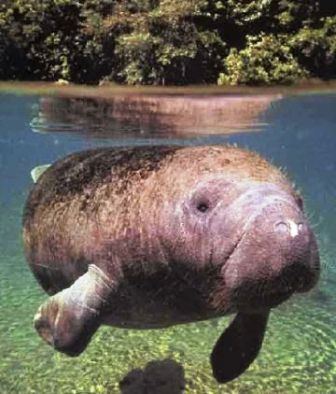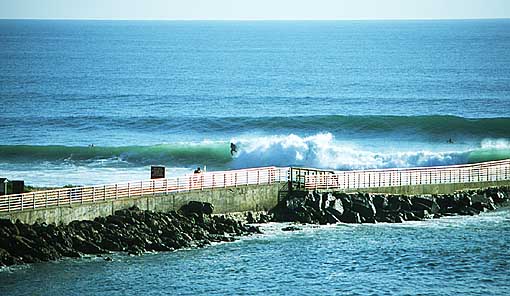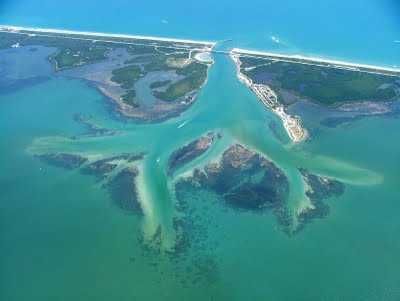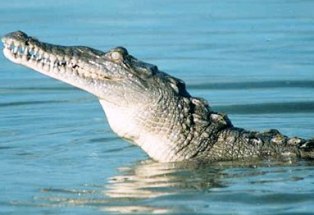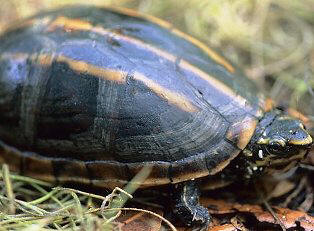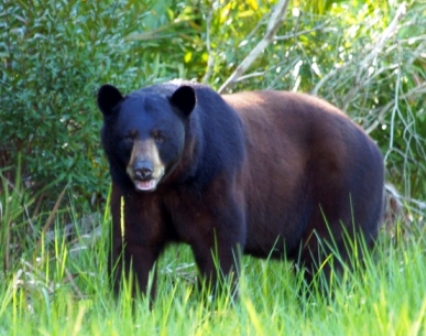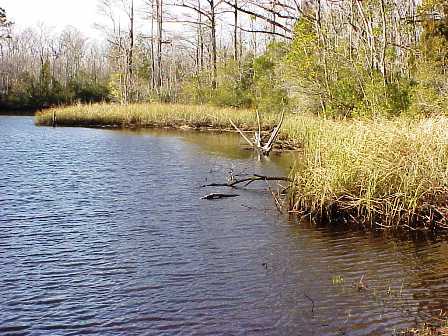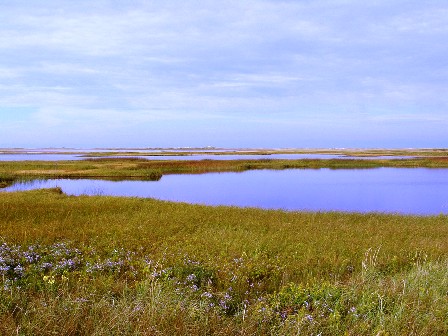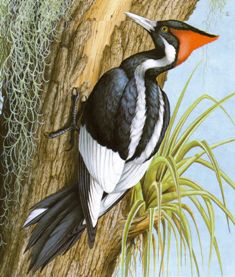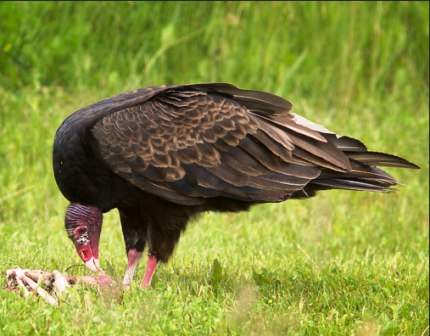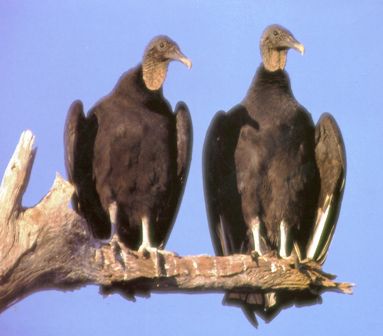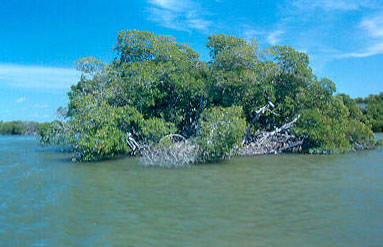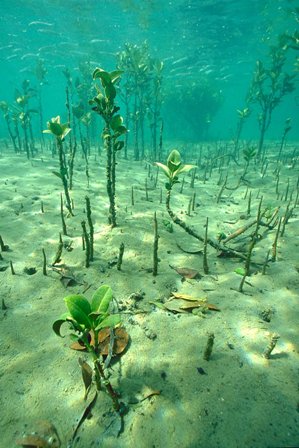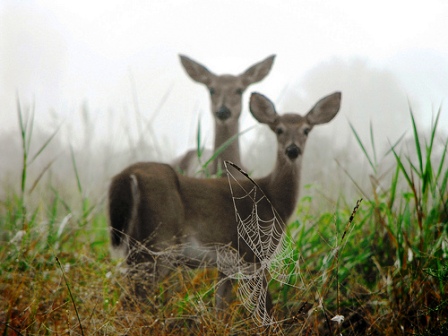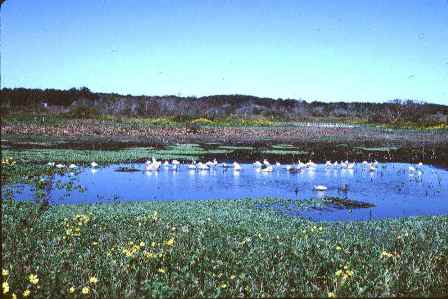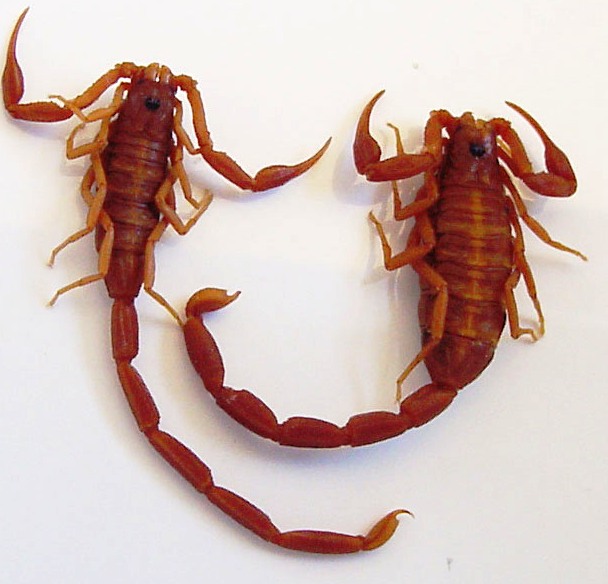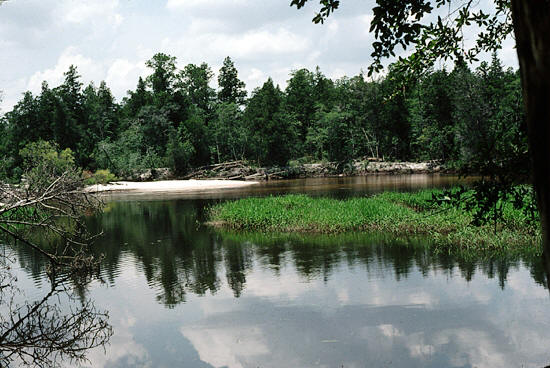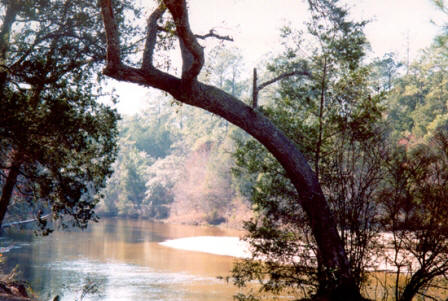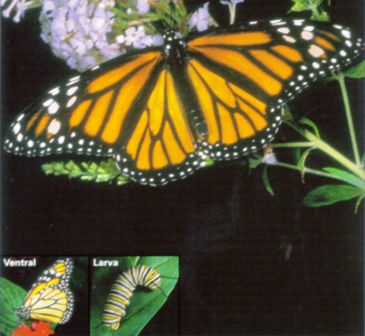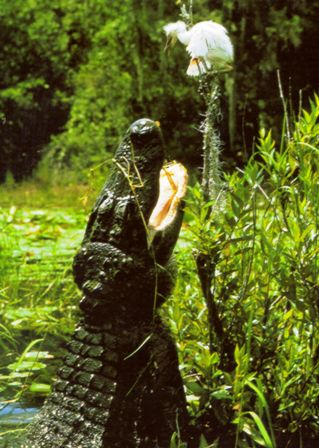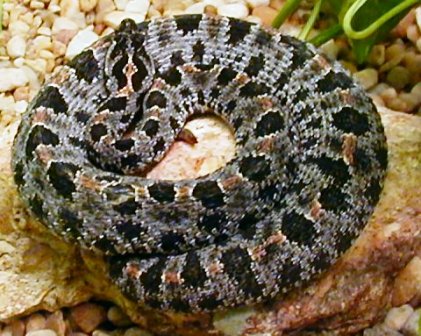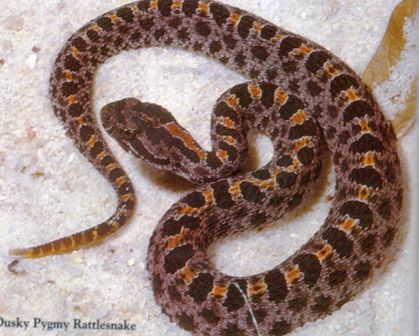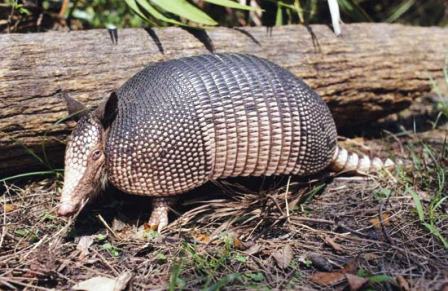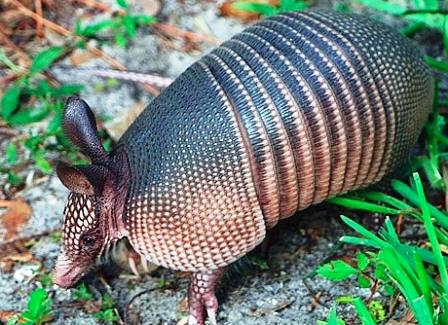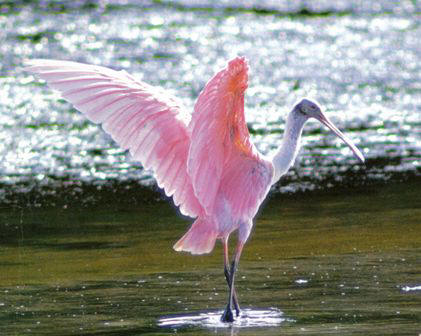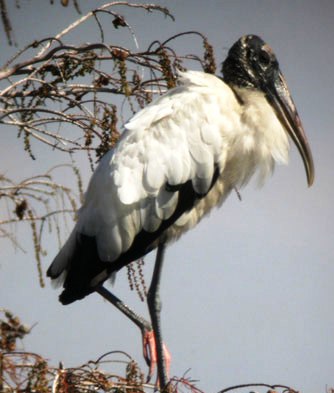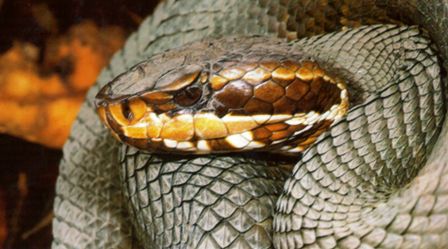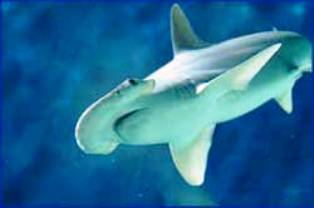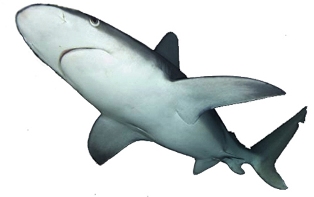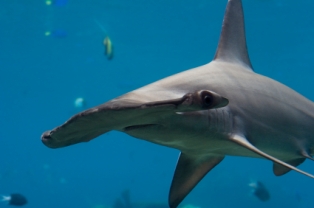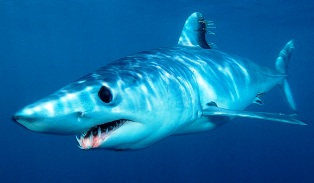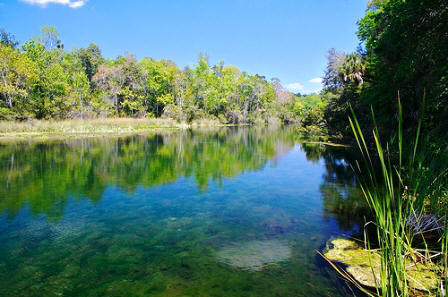Saturday, December 5, 2015
Manatee Season is on its way!
The Florida manatee is a native species found in all parts of the State. Protections for Florida manatees were first enacted in 1893. Today, they are protected by the Florida Manatee Sanctuary Act, Florida Statutes and are federally protected by both the Marine Mammal Protection Act and the Endangered Species Act.
Manatees are herbivores, which means they eat plants. Also known as a "sea cow," manatees usually spend up to eight hours a day grazing on seagrasses and other aquatic plants. A manatee can consume up to 10 percent of its body weight in aquatic vegetation daily. The manatee uses its muscular lips to tear plants much like an elephant uses its trunk.
Manatees are mammals. They must surface approximately every five minutes to breathe, but can hold their breath for as long as twenty minutes when resting. The manatee's nose is usually the only part of its body that comes out of the water when it breathes. If they are using a lot of energy, they may surface to breathe as often as every 30 seconds. Manatees rest from 2 to 12 hours a day either suspended near the water's surface or lying on the bottom, usually for several hours at a time.
Monday, November 16, 2015
Florida Nature Spot of the Week: Sebastian Inlet State Park
The
history of the Sebastian Inlet area goes back to the end of the last ice
age. The barrier islands formed from sandbars off the coast of the
mainland. As vegetation took hold on the sandbars, animals moved in,
followed by the first human inhabitants, the Paleo hunters. The
Ais Indians were more recent inhabitants of the
barrier islands. They were a tribe of hunters and gatherers who lived
off the bounty of the land and sea. By 1760, all of the Ais Indians were
gone. Like the other natives of Florida, they succumbed to European
diseases and mistreatment.
Sebastian Inlet State Park is a Florida State Park located 10 miles south of Melbourne Beach and 6 miles north of Vero Beach, Florida. The park lies on both sides of the Sebastian Inlet, which forms the boundary between Brevard and Indian River counties. The land for the park was acquired by the state of Florida in 1971. In 2006, it was the sixth most visited state park in Florida. The park occupies 755 acres on the barrier island on the Atlantic coast of Brevard County, at a point where a channel links the Indian River Intracoastal waterway with the Atlantic. Part of the Park is south of the Inlet on Orchid Island in Indian River County.
Sebastian Inlet State Park is a Florida State Park located 10 miles south of Melbourne Beach and 6 miles north of Vero Beach, Florida. The park lies on both sides of the Sebastian Inlet, which forms the boundary between Brevard and Indian River counties. The land for the park was acquired by the state of Florida in 1971. In 2006, it was the sixth most visited state park in Florida. The park occupies 755 acres on the barrier island on the Atlantic coast of Brevard County, at a point where a channel links the Indian River Intracoastal waterway with the Atlantic. Part of the Park is south of the Inlet on Orchid Island in Indian River County.
Monday, November 2, 2015
Florida's endangered reptiles
Florida has six endangered reptile species, eleven threatened
species and seven species of special concern for a total of twenty
four reptiles at risk in Floridian nature. Reptiles have been around for 300 million
years, and during the age of the dinosaurs, they ruled the Earth. Some
6,500 species of reptiles still thrive today. There are more than 8,000
species of reptiles on the planet, and the live on every continent
except Antarctica ."Cold-blooded" is not the best way to describe
reptiles- they get their body heat from external sources. Reptiles
cannot regulate their body temperature internally as humans do. Reptiles
are among the longest-lived species on the planet. For example, large
tortoises such as the Aldabra tortoise can live for more than 150 years.
Alligators can live nearly 70 years. Ball pythons, a popular type of pet
snake, can live up to 40 years
American crocodiles are endangered in Florida. They live in coastal areas throughout the Caribbean, and occur at the northern end of their range in south Florida. They live in brackish or saltwater areas, and can be found in ponds, coves, and creeks in mangrove swamps. Unlike the American Alligator, the American Crocodile has a narrow snout, and both upper and lower teeth are exposed on the crocodile when his mouth is closed. American crocodiles are more of a grayish green in color, while alligators are a darker black. Crocodiles can be seen sunning with their mouths open, or “gaping.” This behavior is related to regulating their body temperature, and does not mean that the crocodile is acting aggressively toward people. The American crocodile is so rare and shy of man that conflict with people rarely occurs.
Another endangered reptile in Florida is the striped mud turtle. Throughout much of its range in Florida, the striped mud turtle is characterized by yellow head stripes and three light longitudinal stripes on a dark brown carapace. This turtle is only 3 to 4 inches in length and has a double-hinged plastron, similar to the eastern box turtle. The sexes can be distinguished by the longer, thicker tails of males. The striped mud turtle is different from most other turtles species in the Southeast in that females nest in the fall, rather than the spring or summer. Striped mud turtles inhabit calm freshwater habitats, such as swamps and canals with soft substrates and are most common in cypress swamps and blackwater creeks.
American crocodiles are endangered in Florida. They live in coastal areas throughout the Caribbean, and occur at the northern end of their range in south Florida. They live in brackish or saltwater areas, and can be found in ponds, coves, and creeks in mangrove swamps. Unlike the American Alligator, the American Crocodile has a narrow snout, and both upper and lower teeth are exposed on the crocodile when his mouth is closed. American crocodiles are more of a grayish green in color, while alligators are a darker black. Crocodiles can be seen sunning with their mouths open, or “gaping.” This behavior is related to regulating their body temperature, and does not mean that the crocodile is acting aggressively toward people. The American crocodile is so rare and shy of man that conflict with people rarely occurs.
Another endangered reptile in Florida is the striped mud turtle. Throughout much of its range in Florida, the striped mud turtle is characterized by yellow head stripes and three light longitudinal stripes on a dark brown carapace. This turtle is only 3 to 4 inches in length and has a double-hinged plastron, similar to the eastern box turtle. The sexes can be distinguished by the longer, thicker tails of males. The striped mud turtle is different from most other turtles species in the Southeast in that females nest in the fall, rather than the spring or summer. Striped mud turtles inhabit calm freshwater habitats, such as swamps and canals with soft substrates and are most common in cypress swamps and blackwater creeks.
Monday, October 26, 2015
Florida Bears
This week-end was the first time bear hunting was allowed in Florida. We still do not know the exact number of bears killed in the hunt but we do know bears were hunted down at a much faster rate than the officials expected and the bear hunt was cancelled after just two days. Florida black bears have had plenty of problems existing before the bear hunt.
Approximately 25-50% of all cubs die before they turn one year old. Natural causes of death include drowning, den cave-ins, hypothermia due to flooded dens, starvation, infections from injuries, and predation (by other bears). Road kills are considered the leading known cause of Florida Bear mortality. More than 1,356 bears are documented to have been killed by vehicles since 1976. Well over 100 bears are killed on Florida roads each year, with the record number, 132, occurring in 2002. Once fully grown, black bears have no predators besides humans and other bears. The other causes of mortality are old age, starvation, poaching (Florida has no legal hunting season), other bears, and disease.
So far the latest tally claims 295 bears have been killed in Florida, nearing the official limit, Florida wildlife authorities said late Sunday. The Florida Fish and Wildlife Conservation Commission stated it was closing the 2015 hunt, because the numbers were already close to the kill plan of 320 bears.
Approximately 25-50% of all cubs die before they turn one year old. Natural causes of death include drowning, den cave-ins, hypothermia due to flooded dens, starvation, infections from injuries, and predation (by other bears). Road kills are considered the leading known cause of Florida Bear mortality. More than 1,356 bears are documented to have been killed by vehicles since 1976. Well over 100 bears are killed on Florida roads each year, with the record number, 132, occurring in 2002. Once fully grown, black bears have no predators besides humans and other bears. The other causes of mortality are old age, starvation, poaching (Florida has no legal hunting season), other bears, and disease.
So far the latest tally claims 295 bears have been killed in Florida, nearing the official limit, Florida wildlife authorities said late Sunday. The Florida Fish and Wildlife Conservation Commission stated it was closing the 2015 hunt, because the numbers were already close to the kill plan of 320 bears.
Monday, October 19, 2015
Florida Ecosystems: Fresh Water Marshes
The largest freshwater marsh is the famous
Everglades in the southeastern
part of the state. Coined the River of Grass by the matriarch of the
Everglades, Marjory Stoneman Douglas, the habitat is now considered on
of the most imperiled in the country. Decades of attempts to drain the
swamp and make it of some use to man has left the system in a
dysfunctional state.
Freshwater marshes are generally wetlands with an open expanse of grasses and other grass-like plants. Freshwater marshes generally contain few, if any, trees and shrubs. Marshes have standing water for much of the year and act as natural filters. As water passes over the marsh, water flow is slowed down, and suspended particles settle out. Like the state's freshwater swamps, water levels fluctuate in the marshes. From June through September daily rains the marshes have standing water. From October to December of January, when the rainfall amounts are very low, the standing water gradually flows towards the coast or seeps into the porous ground. By February and continuing through the end of May, many marshes are completely dry. This makes them susceptible to fires.
Fresh Water Marshes are part of the Freshwater Wetlands and Aquatic Ecosystem. Florida has both the largest freshwater lake and the largest freshwater spring (Wakulla Springs) in the contiguous United States. This makes Florida a very rare state with a lot of aquatic diversity, from the mangroves that prevent erosion to the swamps and marshes that naturally filter our water. Most of the marshes in Florida occur south of Orlando. Before the boom years of the early and mid 1900s, Freshwater marsh habitats flourished along the St. Johns and Kissimmee Rivers and in scattered spots in central Florida. Many of these sites are now gone or severely altered, victims of development.
Freshwater marshes are generally wetlands with an open expanse of grasses and other grass-like plants. Freshwater marshes generally contain few, if any, trees and shrubs. Marshes have standing water for much of the year and act as natural filters. As water passes over the marsh, water flow is slowed down, and suspended particles settle out. Like the state's freshwater swamps, water levels fluctuate in the marshes. From June through September daily rains the marshes have standing water. From October to December of January, when the rainfall amounts are very low, the standing water gradually flows towards the coast or seeps into the porous ground. By February and continuing through the end of May, many marshes are completely dry. This makes them susceptible to fires.
Fresh Water Marshes are part of the Freshwater Wetlands and Aquatic Ecosystem. Florida has both the largest freshwater lake and the largest freshwater spring (Wakulla Springs) in the contiguous United States. This makes Florida a very rare state with a lot of aquatic diversity, from the mangroves that prevent erosion to the swamps and marshes that naturally filter our water. Most of the marshes in Florida occur south of Orlando. Before the boom years of the early and mid 1900s, Freshwater marsh habitats flourished along the St. Johns and Kissimmee Rivers and in scattered spots in central Florida. Many of these sites are now gone or severely altered, victims of development.
Monday, October 12, 2015
Florida's Endangered and Threatened Birds.
With so many birds flying in the beautiful Florida sky, its sometimes easy to forget that some of our birds are threatened and even endangered. Woods storks are one of those endangered birds. Wood storks are tall, white denizens of freshwater or brackish wetlands
and swamps. They can be identified by their long legs, featherless
heads, and prominent bills. These waders feed on minnows in shallow
water by using their bills to perform a rare and effective fishing
technique. The stork opens its bill and sticks it into the water, then
waits for the touch of an unfortunate fish that wanders too close. When
it feels a fish, the stork can snap its bill shut in as little as 25
milliseconds—an incredibly quick reaction time matched by few other
vertebrates. A large, white, bald-headed wading bird of the southeastern
swamps, the Wood Stork is the only stork breeding in the United States.
Its late winter breeding season is timed to the Florida dry season when
its fish prey become concentrated in shrinking pools.
One of the most beautiful birds in Florida is the Roseate Spoonbill and although not threatened it is a species of special concern. Prior to the 1850s, there were probably thousands of spoonbills along
the Gulf Coast in Texas, Louisiana and Florida. By 1920, plume hunting
and colony disturbance largely depleted the spoonbill population in the
United States.The most distinctive characteristic of the roseate spoonbill is its long
spoon-shaped bill. It has a white head and chest and light pink wings
with a darker pink fringe and very long pink legs. The roseate spoonbill
is about two and a half feet in length with a wingspan of about four
and a half feet. Both males and females have the same plumage and
coloring. The male is slightly larger than the female and its bill is a
little longer. The roseate spoonbill can be found on the coasts of
Texas, Louisiana and southern Florida. It is also found in the tropics
and in Central and South America. The roseate spoonbill lives in
mangrove swamps, tidal ponds, saltwater lagoons and other areas with
brackish water., spending lots of time in the water looking food like
small fish, shrimp, mollusks, snails and insects.
The ivory-billed woodpecker is among the world’s largest woodpeckers but that hasn't protected it from being endangered. The Ivory-billed Woodpecker is one of several species whose numbers have dwindled to the point where it is uncertain whether any remain. The species is listed as critically endangered and possibly extinct by the International Union for Conservation of Nature. Only the imperial woodpecker of Mexico, now thought by many to be extinct, was larger than the ivory-bill. Averaging about 20 inches in length, the ivory billed woodpecker is frequently mistaken for the smaller but similarly marked pileated woodpecker. Beetle larvae are the primary food source for ivory-bills, which are often the first woodpeckers on dying trees searching for these larvae. Ivory-bills are believed to mate for life. They share the duties of incubating their china-white eggs and raising their young. Stiff wing feathers make the ivory-bill an especially loud flyer!
The ivory-billed woodpecker is among the world’s largest woodpeckers but that hasn't protected it from being endangered. The Ivory-billed Woodpecker is one of several species whose numbers have dwindled to the point where it is uncertain whether any remain. The species is listed as critically endangered and possibly extinct by the International Union for Conservation of Nature. Only the imperial woodpecker of Mexico, now thought by many to be extinct, was larger than the ivory-bill. Averaging about 20 inches in length, the ivory billed woodpecker is frequently mistaken for the smaller but similarly marked pileated woodpecker. Beetle larvae are the primary food source for ivory-bills, which are often the first woodpeckers on dying trees searching for these larvae. Ivory-bills are believed to mate for life. They share the duties of incubating their china-white eggs and raising their young. Stiff wing feathers make the ivory-bill an especially loud flyer!
Monday, October 5, 2015
Florida Vultures
One common fixture in Floridian nature is vultures or buzzards. Although it has an ugly, bare-skinned face, the Turkey Vulture is
beautiful on the wing. Seldom does this graceful and talented bird flap
its wings as it soars over large areas searching for carrion. The Turkey
Vulture uses its sense of smell to locate carrion. The part of its
brain responsible for processing smells is particularly large, compared
to other birds. Its heightened ability to detect odors allows it to find
dead animals below a forest canopy. The Turkey Vulture roost in a large
group, but usually forages alone, unlike its smaller, more social
relative, the Black Vulture. Although one Turkey Vulture can dominate a
single Black Vulture at a carcass, usually such a large number of Black
Vultures appear that they can overwhelm a solitary Turkey Vulture and
take most of the food.
The Turkey Vulture is a large bird. It has a wingspan of 67–72 inches, a length of 25–32 inches, and weighs between two and six pounds. Turkey vultures have dark brown to black plumage; a featherless, purplish-red head and neck; and a short, hooked, ivory-colored beak. The adult turkey vulture's head is small in proportion to its body and is red in color with few to no feathers. It also has a relatively short, hooked, ivory-colored beak. The irises of the eyes are gray-brown; legs and feet are pink-skinned, although typically stained white. The turkey vulture's eye has a single incomplete row of eyelashes on the upper lid and two rows on the lower lid. Its life expectancy in the wild ranges upward of 16 years, with a captive life span of over 20 years being possible.
The Turkey Vulture is a large bird. It has a wingspan of 67–72 inches, a length of 25–32 inches, and weighs between two and six pounds. Turkey vultures have dark brown to black plumage; a featherless, purplish-red head and neck; and a short, hooked, ivory-colored beak. The adult turkey vulture's head is small in proportion to its body and is red in color with few to no feathers. It also has a relatively short, hooked, ivory-colored beak. The irises of the eyes are gray-brown; legs and feet are pink-skinned, although typically stained white. The turkey vulture's eye has a single incomplete row of eyelashes on the upper lid and two rows on the lower lid. Its life expectancy in the wild ranges upward of 16 years, with a captive life span of over 20 years being possible.
The more southern of our two common vulture species, the Black Vulture
flaps its wings rather frequently while it soars. It is more social than
the Turkey Vulture, often traveling in large flocks. Like the Turkey
Vulture, the Black Vulture’s numbers are increasing and its range is
expanding northward in response to global climate changes. These
vultures are found in lowland areas along rivers or in open habitats in
the southern United States and throughout Central and South America.
They rarely inhabit dense forests. The Black Vulture has adapted well to
human habitats and can be seen at garbage dumps, markets, and fishing
docks. Vultures eat carrion in the form of road-kills or dead cattle in
pastures. Black vultures are more aggressive and may occasionally kill
or injure lambs, calves, cows giving birth, or other incapacitated
livestock. These birds soar looking for carcasses or other scavenger
activity.
Thursday, October 1, 2015
Florida's Mangroves
Mangroves are one of Florida's true natives. They thrive in salty
environments because they are able to obtain fresh water from saltwater.
Some secrete excess salt through their leaves, others block absorption
of salt at their roots. Florida's estimated 469,000 acres of mangrove
forests contribute to the overall health of the state's southern coastal
zone. This ecosystem traps and cycles various organic materials,
chemical elements, and important nutrients. Mangrove roots act not only
as physical traps but provide attachment surfaces for various marine
organisms. Many of these attached organisms filter water through their
bodies and, in turn, trap and cycle nutrients.
Worldwide, more than 50 species of mangroves exist. Of the three species found in Florida, the red mangrove is probably the most well-known. It typically grows along the water's edge. The red mangrove is easily identified by its tangled, reddish roots called "prop roots." These roots have earned mangroves the title, "walking trees." The mangrove appears to be standing or walking on the surface of the water. Mangroves are common as far north as Cedar Key on the Gulf coast and Cape Canaveral on the Atlantic coast. Black mangroves can occur farther north in Florida than the other two species. Frequently, all three species grow intermixed.
Worldwide, more than 50 species of mangroves exist. Of the three species found in Florida, the red mangrove is probably the most well-known. It typically grows along the water's edge. The red mangrove is easily identified by its tangled, reddish roots called "prop roots." These roots have earned mangroves the title, "walking trees." The mangrove appears to be standing or walking on the surface of the water. Mangroves are common as far north as Cedar Key on the Gulf coast and Cape Canaveral on the Atlantic coast. Black mangroves can occur farther north in Florida than the other two species. Frequently, all three species grow intermixed.
Tuesday, September 22, 2015
Florida Artists: Ernest Hemingway
Ernest Hemingway, a preeminent literary figure of the 20th century moved
to Key West in 1928, living there periodically until 1940. Hemingway
wrote all or part of his most famous works including A Farewell to Arms,
For Whom the Bell Tolls, and The Snows of Kilimanjaro
in Key West. In 1954, Ernest Hemingway became only the fifth American
to receive the Nobel Prize for Literature. He also was awarded a
Pulitzer Prize for his novel The Old Man and the Sea.
Ernest Hemingway, himself a great sportsman, liked to portray soldiers, hunters, bullfighters - tough, at times primitive people whose courage and honesty are set against the brutal ways of modern society, and who in this confrontation lose hope and faith. His straightforward prose, his spare dialogue, and his predilection for understatement are particularly effective in his short stories, some of which are collected in Men Without Women and The Fifth Column and the First Forty-Nine Stories
Death and violence were the two great constants in Hemingway's troubled, chaotic life. Fifty-one years later, Ernest Hemingway used a gun to kill himself. He was a tough, strong man with strong principles. Hemingway "believed that life was a tragedy and knew it could only have one end", yet he was blessed with talent and drive. That may have made it harder for him to admit his failures and correct them. Hemingway died in Idaho in 1961. In 2001, two of his books, The Sun Also Rises and A Farewell to Arms, would be named to the list of the 100 best English-language novels of the 20th century by the editorial board of the American Modern Library.
Ernest Hemingway, himself a great sportsman, liked to portray soldiers, hunters, bullfighters - tough, at times primitive people whose courage and honesty are set against the brutal ways of modern society, and who in this confrontation lose hope and faith. His straightforward prose, his spare dialogue, and his predilection for understatement are particularly effective in his short stories, some of which are collected in Men Without Women and The Fifth Column and the First Forty-Nine Stories
Death and violence were the two great constants in Hemingway's troubled, chaotic life. Fifty-one years later, Ernest Hemingway used a gun to kill himself. He was a tough, strong man with strong principles. Hemingway "believed that life was a tragedy and knew it could only have one end", yet he was blessed with talent and drive. That may have made it harder for him to admit his failures and correct them. Hemingway died in Idaho in 1961. In 2001, two of his books, The Sun Also Rises and A Farewell to Arms, would be named to the list of the 100 best English-language novels of the 20th century by the editorial board of the American Modern Library.
Friday, September 18, 2015
Florida Nature Spot of the Week: Paynes Prairie State Reserve
Paynes Prairie is biologically, geologically, and historically unique.
Payne's Prairie is located south of Gainesville, Florida, in Micanopy.
This park became Florida´s first state preserve in 1971 and is now
designated as a National Natural Landmark.
The water in this huge saucer-like basin has had a way of coming and going because of a sinkhole in one corner. From time to time the sink would fill with debris and the water would rise and remain. Years later the sinkhole would become unplugged, the water would drain away and the area would revert to savanna. In 1892 a small steamer plying the lake was stranded when the water suddenly disappeared. Since then the basin has remained a treeless prairie.
The La Chua Trail, part of the 21,000-acre Paynes Prairie State Preserve, is at the southeast edge of Gainesville. The trail traverses an immense patchwork of fields and marshes. The grass and brush along the first stretch can be very good for sparrows in winter. A short side trail here leads to a pond, Alachua Sink, where you can see waders and, during periods of low water, shorebirds. The trail proceeds into wetter habitats, with a drainage canal on one side and marshes on the other, until it reaches the shallow weedy open water of Alachua Lake, the center of the Paynes Prairie basin.
The Bolen Bluff Trail is on the south side of Paynes Prairie State Preserve. The trail is divided into two parts. There's an upland loop, about half of which is dry woodland dominated by laurel, live, and water oaks while the other half is shady mesic hammock forested with swamp chestnut oaks and magnolias; there are a few small ponds along the latter stretch. At the far end of the loop, a spur trail, the Bolen Bluff Dike, descends onto the Prairie basin, running through open brushy and marshy habitats for three-quarters of a mile (one-way) to an observation platform.
The water in this huge saucer-like basin has had a way of coming and going because of a sinkhole in one corner. From time to time the sink would fill with debris and the water would rise and remain. Years later the sinkhole would become unplugged, the water would drain away and the area would revert to savanna. In 1892 a small steamer plying the lake was stranded when the water suddenly disappeared. Since then the basin has remained a treeless prairie.
The La Chua Trail, part of the 21,000-acre Paynes Prairie State Preserve, is at the southeast edge of Gainesville. The trail traverses an immense patchwork of fields and marshes. The grass and brush along the first stretch can be very good for sparrows in winter. A short side trail here leads to a pond, Alachua Sink, where you can see waders and, during periods of low water, shorebirds. The trail proceeds into wetter habitats, with a drainage canal on one side and marshes on the other, until it reaches the shallow weedy open water of Alachua Lake, the center of the Paynes Prairie basin.
The Bolen Bluff Trail is on the south side of Paynes Prairie State Preserve. The trail is divided into two parts. There's an upland loop, about half of which is dry woodland dominated by laurel, live, and water oaks while the other half is shady mesic hammock forested with swamp chestnut oaks and magnolias; there are a few small ponds along the latter stretch. At the far end of the loop, a spur trail, the Bolen Bluff Dike, descends onto the Prairie basin, running through open brushy and marshy habitats for three-quarters of a mile (one-way) to an observation platform.
Wednesday, September 9, 2015
Florida Nature: Scorpions
Scorpions vary in size from one to four inches long. These crab-like
animals are dark brown, have a broad flattened body, and ten legs. The
front pair of legs is modified into claw-like pincers which are used to
hold their prey. A scorpion's most noticeable feature is their curled
fleshy tail. It is usually held over their body. The scorpion tail
ends in an enlarged upturned tip that ends in a stinger. The sting is
used for defense as well as for capturing prey.
Scorpion venom is a nerve poison, but the dose injected usually is not enough to kill adults. While no Florida scorpions are capable of inflicting a lethal sting, those that have had scorpion stings report that it is very painful, probably more so than a wasp sting. Scorpions rarely sting humans except when pinned against the skin, such as under clothes or when trapped in bed sheets. The site of the sting may be sore and swollen for some time. An antivenin is available for severe reactions to scorpion stings.
Scorpions like to hide outside under boards, rubbish, or other areas that provide shelter and protection. They are a nuisance especially in recently built homes. These predators are active at night, and do their share to reduce pests in and around the home. Another interesting feature about scorpions is that they glow under ultraviolet lights – so get out the black lights to help track them down.
The Hentz striped scorpion is the most common and smallest of the three species of scorpions found in Florida. The average size of this scorpion is 2-2 3/4 inches. This scorpion is found statewide, except the Florida Keys. The Hentz striped scorpion is dark brown to tan, often striped with greenish yellow along midline above. Some species have greenish-yellow parallel stripe on each side of cephalothorax. Hentz striped scorpions have a slender abdomen that is pale or dark according to species; they also have a tooth beneath the venom bulb. Hentz Striped Scorpions live in dark crevices under bark, stones, and litter on the ground, and on dry abandoned dirt roads. Although no one is ever glad to see a scorpion in or near the home, the upside to the Hentz striped scorpion is that they love to eat cockroaches!
Tuesday, September 1, 2015
Floridian Nature Spot of the Week: Blackwater River State Park
Blackwater River State Park is a Florida State Park located fifteen miles northeast of Milton. Blackwater River State Park is considered one of the purest sand-bottom
rivers in the world, the Blackwater River is in its natural state
for almost its entire length. Beginning 45 miles upstream in Alabama, it
continues downstream for 13 miles before emptying into Blackwater Bay.
The river's sand bottom, dark tannin waters and contrasting large, white
sandbars have drawn worldwide attention and provide the perfect setting
for this 590- acre park.
Upland pine forests dotted with
persimmon, turkey oak,
sweetgum, flowering dogwood and other shrubs are found in the park.
Open canopy forests combine different types of pine and dense
groundcover such as
gallberry, saw palmetto,
wiregrass, wild blueberry and wax myrtle. Along the river and large
streams in the floodplain area, the forest is dominated by various
species of oaks and hickory, red maple, sycamore, magnolia, holly,
tupelo and azaleas. The water level in the floodplain and swamp lakes
fluctuates and may even become completely dry. Plants vary according to
the water supply. Look for water fern, water lily, coontail,
bladderwort, spatterdock and other emergent plants. White-tailed deer,
bobcats and turkeys are quite common.
River otter may be seen occasionally and the graceful Mississippi kite is often observed soaring overhead in the summer.
Saturday, August 22, 2015
Attract butterflies to your Florida garden
Firebush...the name says it all! This tropical shrub is known for two attributes. First, the plant shows colors that would make any blaze proud. And second, it's the only plant that I know which actually performs better the closer it gets to spontaneous combustion! Firebush is a showy, fast-growing, semi-woody evergreen shrub that can get up to 15 feet tall under ideal conditions, but usually stays much smaller. It has whorled leaves, usually with three but occasionally as many as seven at each node. The firebush hails from South Florida, the West Indies, and Central and South America. In its native habitat, Firebush is known more for its herbal properties than for its ornamental value. Throughout the year, firebush produces showy terminal clusters (cymes) of bright reddish-orange or scarlet tubular flowers. Firebush is a valuable addition to butterfly and hummingbird gardens, and in south Florida is often planted in wildlife gardens with other native shrubs such as American beautyberry, coral bean and wild coffee. Firebush is salt tolerant and will grow in any kind of soil as long as it is well drained.
Common lantana is a rugged evergreen shrub from the tropics. The species will grow to 6 feet high and may spread to 8 feet in width with some varieties able to clamber vine-like up supports to greater heights. The leaves are 2-5 inches long by 1-2 inches wide with rounded tooth edges and a textured surface. Stems and leaves are covered with rough hairs and emit an unpleasant aroma when crushed. The small flowers are held in clusters, called umbels that are typically 1-2 inches across. In the tropics lantana is a non-stop bloomer. Where it is killed to the ground by frost the lantana blooms in summer and fall. Flower color ranges from white to yellow, orange to red, pink to rose in unlimited combinations, in addition the flowers usually change in color as they age. A lantana may look orange from a distance but the flowerhead is examined at close range it consists of individual white, yellow and red flowers that blend when viewed from afar. Lantana is a favorite species for butterflies and non-invasive lantanas should be a part of any butterfly garden.
Spanish Needles seems to be a favorite nectar plant for lots of butterflies in South Florida. This native plant is a summer annual about 2-5 feet tall. The Spanish Needles plant is more or less erect and branches occasionally. The stems are green or reddish green, angular, strongly veined, and hairless. The leaves are mostly opposite; their blades are up to 8 inches long and 4 inches across, while their petioles are up to 2 inches long. The upper stems terminate in individual flowerheads on long peduncles. Each flowerhead is about ½ inch long and ¼ inch across. Spanish Needles have numerous disk florets in their center. The disk florets have corollas that are golden yellow and tubular in shape. The yellow ray florets are petal-like and are about 1/8 inch long and oval to oblong in shape. Some flowerheads may lack petal-like extensions of the ray florets altogether. The base of the flowerhead is surrounded by green bracts. The blooming period occurs during the late summer or early fall.
Resembling the annual garden petunias, wild petunia, sometimes called Mexican petunias, produces a single five lobed, trumpet-shaped flower, that is1-2 inches long and wide, and emerging where each leaf joins the stem. Although it superficially resembles a garden petunia, which is in the potato family, wild petunia is a member of the Acanthus family, to which the cultivated “shrimp plant” and “Black-Eyed-Susan” also belong. The flowers of wild petunia vary in color from pale lavender to medium bluish-purple. On some plants the stems and the paired, egg-shaped leaves are hairy. The plant grows 1-2 feet tall, although a little scraggly. Blooming June through September, the blossoms last only a day or two, but new flowers form in succession. The plant self-seeds, and new shoots can be seen throughout the garden from a single planting. Wild Petunias are easily transplanted. Germination from seeds is low, but summer stem cuttings will root well. This plant was named for an early French herbalist Jean Ruella.
Wednesday, August 12, 2015
Crocs vs. Gators: Do you know the difference?
Similar in looks to an alligator, the American crocodile is a large reptile found in salt and brackish waters in
southern Florida Unlike the alligator,
which lives in freshwater, Florida's native crocodile is an inhabitant
of salt water shorelines. There are far less crocodiles than alligators
in Floridian nature and most of Florida's crocodile can be found along
the
mangrove bordered southern shores of
Everglades National Park.
When Spanish settlers first saw the Alligator they named it "el lagarto", meaning "the lizard". The Florida alligator is an ancient reptile that is only found in the Southeastern United States, from Texas to as far north as North Carolina. The only other species of alligator in the world is found in China, but that one is much smaller and very rare.
Many people believe that crocodiles are more ferocious and dangerous to man than the alligator. This may be true of the infamous Nile Crocodile and other South American crocodiles, but the native Florida crocodile is much shyer than the alligator and is quick to make a hasty retreat at the approach of humans. Once hunted intensively for their hides, today, loss of habitat to human development, illegal killing and roadkill are the greatest threats faced by American Crocodiles.
The Alligator has an armored black, lizard-like body, with muscular tails and short stocky legs. They are fast predators on both land and water, able to run as fast as 20 mph for short distances. The massive jaws of the alligator's open mouth reveals 70-80 white pointed teeth, designed to grasp, hold and crush its prey! Adults generally take one of two forms: long and thin or short and stocky. Female alligators rarely exceed 9 feet in length, but males can grow much larger. The Florida state record for length is a 14 foot 5/8 inch male, while the state record for weight is a 1,043 pound (13 feet 10 1/2 inches long) male.
Crocs can swim at as much as 20 miles per hour by moving their body and tail in a sinuous fashion, but they cannot sustain this speed. South Florida is the only place in which the crocodile and the alligator occur together. Although there are reports of crocodile growing to 23 feet in South America, the record for Florida is a 15 foot male. American Crocodiles average between 7-15 feet and have an average weight of 150-450 pounds. A croc has an average lifespan of 60-70 years.
When Spanish settlers first saw the Alligator they named it "el lagarto", meaning "the lizard". The Florida alligator is an ancient reptile that is only found in the Southeastern United States, from Texas to as far north as North Carolina. The only other species of alligator in the world is found in China, but that one is much smaller and very rare.
Many people believe that crocodiles are more ferocious and dangerous to man than the alligator. This may be true of the infamous Nile Crocodile and other South American crocodiles, but the native Florida crocodile is much shyer than the alligator and is quick to make a hasty retreat at the approach of humans. Once hunted intensively for their hides, today, loss of habitat to human development, illegal killing and roadkill are the greatest threats faced by American Crocodiles.
The Alligator has an armored black, lizard-like body, with muscular tails and short stocky legs. They are fast predators on both land and water, able to run as fast as 20 mph for short distances. The massive jaws of the alligator's open mouth reveals 70-80 white pointed teeth, designed to grasp, hold and crush its prey! Adults generally take one of two forms: long and thin or short and stocky. Female alligators rarely exceed 9 feet in length, but males can grow much larger. The Florida state record for length is a 14 foot 5/8 inch male, while the state record for weight is a 1,043 pound (13 feet 10 1/2 inches long) male.
Crocs can swim at as much as 20 miles per hour by moving their body and tail in a sinuous fashion, but they cannot sustain this speed. South Florida is the only place in which the crocodile and the alligator occur together. Although there are reports of crocodile growing to 23 feet in South America, the record for Florida is a 15 foot male. American Crocodiles average between 7-15 feet and have an average weight of 150-450 pounds. A croc has an average lifespan of 60-70 years.
Thursday, August 6, 2015
Floridian Nature Spot of the Week: Grayton Beach
Grayton Beach, Florida is well known for the incomparable natural beauty
of the Grayton Beach State Park, which spans the Gulf of Mexico and
most of Western Lake. Grayton Beach State Park is a Florida State Park
located between Panama City Beach and Destin, near the unincorporated
area of Grayton Beach, on CR 30A, in northwestern Florida. Its sister
park is Deer Lake State Park. Golden in the morning sun, silvered by
moonlight, Grayton Beach has consistently been ranked among the most
beautiful and pristine beaches in the United States. A suburb, mile-long
beach of brilliant white sand awaits visitors to this interesting park.
The beach provides an idyllic setting for swimming, sunbathing, and
surf fishing. Behind the beach, high barrier dunes stabilized by sea
oats and scrub overlook the clear green and azure waters where dolphins
are often spotted. The appeal to swimmers is obvious!
If you like Floridian nature, you will love Grayton Beach! Grayton Beach provides an idyllic setting for swimming, sunbathing, and surf fishing. Behind the beach, high barrier dunes stabilized by sea oats and scrub overlook the clear green and azure waters where dolphins are often spotted. For those interested in wildlife there are two trails, the 15 minute Pine Loop, and the 40 minute Barrier Dune Nature trail.
If you like Floridian nature, you will love Grayton Beach! Grayton Beach provides an idyllic setting for swimming, sunbathing, and surf fishing. Behind the beach, high barrier dunes stabilized by sea oats and scrub overlook the clear green and azure waters where dolphins are often spotted. For those interested in wildlife there are two trails, the 15 minute Pine Loop, and the 40 minute Barrier Dune Nature trail.
Thursday, July 30, 2015
Dusky Pygmy Rattlesnake
Everyone in Floridian nature is aware of most of the deadly snakes that inhabit our land and water but many forget about the smallest deadly snake in Florida, the dusky pygmy rattlesnake. The Feisty little dusky pygmy rattler is rarely longer than twenty inches, and is common throughout the state of Florida. This small rattler lives in pine-palmetto flatwoods, scrub, and longleaf pine habitats that are not far from fresh water. The Dusky Pygmy Rattlesnake is a hot-tempered snake, usually striking repeatedly at the slightest threat. This pit vipers venom is very potent but the dose it delivers is small. Although the Pygmy Rattler vibrates its tail when annoyed, the little rattles are barely audible, sounding more like the faint buzz of an insect. This is all the more reason to be wary of this snake. Although its bite is unlikely to cause death, it can be very painful and can cause infection or tissue destruction.
The Dusky Pygmy rattle is made of of a substance called keratin, similar to human fingernails. At birth, a rattlesnake has only a single button at the end of its tail. As the snake grows, another loosely interlocking segment is added each time it sheds its skin. A healthy rattlesnake might shed its skin and add another rattle as often as four times a year, but the snake can also have a few or even all of the segments break off from time to time, so it is an unreliable marker for guessing the age of the rattlesnake. The rattles are probably a protective device to scare away predators.
Friday, July 24, 2015
Floridian Armadillos & Leprosy
The nine-banded armadillo, named for the nine breaks in the creature’s
leathery armor that allow it to flex its stiff hide, is an odd-looking
mammal about the size of a cat and ordinarily we do not think of armadillos being more of a problem than a pest who digs up our yard or roadkill laying along every highway in Florida but news this weeks tells us they may actually spread leprosy!
According to CBS news Florida has nine reported cases of leprosy across the state. Normally, the state health department says Florida sees only 10 cases in an entire year. Leprosy, a biblical disease that affects both the skin and nervous system is mostly found in areas like Africa, Brazil and India. Of the estimated two million people who suffered from leprosy world wide only about 294 cases were found in the entire United States last year.
Armadillos like forested or semi-open habitats with loose textured soil that allows them to dig easily. Armadillos tend to frequent the vicinity of streams and water holes, although they seem to avoid marshy areas. Tracks in the mud around small ponds give evidence that the armadillos visit them not only for purposes of drinking and feeding, but also to take mud baths.
With July being their mating season, armadillos are going to be very active. The main danger lies in their saliva which is believed how they spread the potentially deadly disease. Armadillos have a tendency to spit at predators as part of their defense system. In 1971, a captive armadillo developed leprosy 17 months after it was inoculated with the bacterium Mycobacterium leprae obtained from an infected human. Subsequently, armadillos have been used in further study of this disease.
Armadillos feed primarily on insects and their larvae. They also eat earthworms, scorpions, spiders, snails, and small vertebrates and their eggs. Reports of armadillo damage to birds' nests on the ground are rare. People cannot help but appreciate the fact that armadillos consume large amounts of armyworms, cockroaches, ants, wasps, flies, beetles, and grasshoppers.
According to CBS news Florida has nine reported cases of leprosy across the state. Normally, the state health department says Florida sees only 10 cases in an entire year. Leprosy, a biblical disease that affects both the skin and nervous system is mostly found in areas like Africa, Brazil and India. Of the estimated two million people who suffered from leprosy world wide only about 294 cases were found in the entire United States last year.
Armadillos like forested or semi-open habitats with loose textured soil that allows them to dig easily. Armadillos tend to frequent the vicinity of streams and water holes, although they seem to avoid marshy areas. Tracks in the mud around small ponds give evidence that the armadillos visit them not only for purposes of drinking and feeding, but also to take mud baths.
With July being their mating season, armadillos are going to be very active. The main danger lies in their saliva which is believed how they spread the potentially deadly disease. Armadillos have a tendency to spit at predators as part of their defense system. In 1971, a captive armadillo developed leprosy 17 months after it was inoculated with the bacterium Mycobacterium leprae obtained from an infected human. Subsequently, armadillos have been used in further study of this disease.
Armadillos feed primarily on insects and their larvae. They also eat earthworms, scorpions, spiders, snails, and small vertebrates and their eggs. Reports of armadillo damage to birds' nests on the ground are rare. People cannot help but appreciate the fact that armadillos consume large amounts of armyworms, cockroaches, ants, wasps, flies, beetles, and grasshoppers.
Thursday, July 16, 2015
Floridian Nature Spot of the Week: St. Joseph Pennisula State Park
If you are looking for a great place to enjoy Floridian nature, you should check out St. Joseph Peninsula State Park. Its miles of fine natural beach are good for swimming and fishing. With miles of white sugar sand, this park has one of the top rated beaches in the United States. Sunbathing, snorkeling, and swimming are popular activities along the Gulf of Mexico and St. Joseph Bay. Outdoor enthusiasts can enjoy camping, fishing, hiking, and bicycling. From offshore, canoeists and kayakers can take in a superb view of the high dunes and sand pine scrub. The fall is best for catching large redfish, sharks, bluefish, and flounder, while spring is excellent for pompano, whiting, and speckled trout.
Indians once inhabited the peninsula and gathered shellfish for meals from the bay's shallow waters. Before the area was purchased for development as a state park, it was used as a U.S. Army training facility during World War II.
Named for lifelong community leader and settler T.H. Stone, the park is teeming with wildlife and marine life. Noted as an excellent birding area with sitings of 209 species currently recorded, it is a premier location in the eastern United States for observing hawks during fall migration. Many species can be seen including the endangered peregrine falcon.
The monarch butterfly is also on the wing in autumn, making its long migratory journey from northern states to wintering sites in Mexico. Shore and wading birds are in abundance throughout the year.
The park offers picnicking, swimming, camping, saltwater fishing, boating and wilderness hiking in the park's 1,650-acre wilderness preserve. St. Joseph offers luxury, furnished cabins located on the bay side of the park. Each cabin is a two-story elevated building. They have open lofts with two double beds, a sleeper sofa and daybed. Each has an equipped kitchen, bathroom and living area. Linens and towels are given at the beginning of the visit. For extended visits, visitors are encouraged to bring extra towels. There are 119 campsites with water, electricity, picnic tables and grills.
Wednesday, July 8, 2015
Where are the Cedar Key Birds?
There is something amiss in Floridian nature and so far no one has any answers. Something strange has happened to the birds living on one of the islands off of Cedar key. They have suddenly all disappeared, all 15,000 of them!!! Brown pelicans, various herons and egrets, ibis, roseate spoonbills, cormorants, and countless other types of birds come every year to this small island to lay their eggs and wait for them to hatch. This year the birds came as usual but in just a few day's span all the birds abandond their nests and simply disappeared.
On April 20, the birds disappeared from Seahorse Key, a small island approximately four miles southwest of Cedar Key that has a mandated period where humans are not even allowed to visit the island so that the birds can nest in peace. It's part of the Cedar Keys National Wildlife Refuge, about 21 miles west northwest of Crystal River, established in 1929 as a sanctuary for birds devastated by decades of hunting for their colorful plumage. Accessible only by boat, today it's a rare island not dominated by human activity and development.
This strange abandonment by the birds is a great cause of concern and could have a ripple effect of causing problems for other wildlife on the island. For instance cottonmouth snakes eat bird predators like rodents, and in turn the
birds drop lots of fish and other nutrients from the trees to feed the
snakes.
"Any rookery that's persisted for decades as one of the largest colonies is incredibly important," said Janell Brush, an avian researcher with the Florida Fish and Wildlife Conservation Commission. "It's quite a large colony. There had to be some intense event that would drive all these birds away."
On April 20, the birds disappeared from Seahorse Key, a small island approximately four miles southwest of Cedar Key that has a mandated period where humans are not even allowed to visit the island so that the birds can nest in peace. It's part of the Cedar Keys National Wildlife Refuge, about 21 miles west northwest of Crystal River, established in 1929 as a sanctuary for birds devastated by decades of hunting for their colorful plumage. Accessible only by boat, today it's a rare island not dominated by human activity and development.
Now,
the island is littered with eggs that had been pecked but not crushed
and a few bird carcasses, and scientists are trying to figure out what
is going on. “It's quite
strange,” said wildlife biologist Vic Doig of the U.S. Fish and Wildlife
Service. “It's eerie. Normally this island has thousands of birds. Now
it's a deserted island.”
"Any rookery that's persisted for decades as one of the largest colonies is incredibly important," said Janell Brush, an avian researcher with the Florida Fish and Wildlife Conservation Commission. "It's quite a large colony. There had to be some intense event that would drive all these birds away."
Thursday, July 2, 2015
Sharks in Florida Waters
While shark attacks are setting records off the coast of the Carolinas. Florida waters are also home to a variety of sharks. Although they all seem to get a bad rap, many sharks are not aggressive toward people. The average Bonnethead
shark (also known as the Shovelhead shark) is a small, common hammerhead
shark with a smooth, rounded head.The Bonnethead shark is harmless to
people; it is a timid shark. It is a harmless, timid shark that is
gray-brown above and lighter on the underside with short pectoral fins.
The average Bonnethead shark averages about 3.3 feet long. The
Bonnethead shark has a varied diet. The average Bonnethead shark has
small, sharp teeth in the front of the mouth (for grabbing soft prey)
and flat, broad molars in the back (for crushing hard-shelled prey).
It eats both hard-shelled prey (like crustaceans and mollusks) and soft
prey (like small fish), and has a variety of teeth to eat all these
animals. Bonnetheads are found in the western Atlantic and eastern
Pacific Oceans, in the surf zone, reefs, on sandy bottoms and in
estuaries. Large schools of Bonnethead sharks migrate to warm water in
the winter and cooler water in the summer.
Sometimes called a Brown
Shark because of its brownish color, the Sandbar Shark has a massive set
of teeth that are triangular, serrated and razor sharp. It is one of the
biggest coastal sharks in the world, and is closely related to the dusky
shark, the bignose shark, and the bull shark. Its dorsal fin is
triangular and very high, and weighs as much as 18% of the shark's whole
body. Sandbar sharks usually have heavy-set bodies and rounded snouts
that are shorter than the average shark's snout. Their upper teeth have
broadly uneven cusps with sharp edges. Its second dorsal fin and anal
fin are close to the same height. Sandbar sharks can grow to about 7
feet long. Female sandbar sharks can live as long as 21 years and males
can live to 15 years. The sandbar shark is both a predator and a
scavenger; feeding chiefly near the bottom on fish and shellfish. The
sandbar shark migrates long distances, in the western Atlantic
they range from Massachusetts to Brazil. The sandbar shark, true to its
nickname, is commonly found over muddy or sandy bottoms in shallow
coastal waters such as bays, estuaries, harbors, or the mouths of
rivers, but it also swims in deeper waters.
The scalloped hammerhead
shark belongs to the large hammerhead species, and like all
representatives of this family, has the typically formed "hammer"
consisting of a central dent and an arched front edge (hence the name).
Another typical characteristic is the free end tip of the second dorsal
fin which almost reaches the tail fin. Their coloring is mainly olive,
bronze or light brown with a white belly. The edges of the fins are
usually darker on young animals but becomes lighter as they grow older.
Mature females can reach a length of more than 4 meters, the average
length is, however, less. This hammerhead species feeds mostly on
fish such as sardines, herring and mackerels, occasionally also on
invertebrates such as octopuses. Large scalloped hammerhead sharks also
eat small-sized shark species such as the Atlantic sharpnose shark.
Scalloped hammerhead sharks are found practically around the world in
the coastal regions of tropical, subtropical and moderate climate zones.
The shortfin mako shark is a sleek spindle
shaped shark with a long conical snout. This shark has short pectoral
fins and a crescent shaped caudal (tail) fin. There is a distinct caudal
keel on the caudal base. Its second dorsal fin is much smaller than the
first. The teeth are are slender and slightly curved with no lateral
cusps, and are visible even when the mouth is closed. There is marked
counter shading on this shark: dorsally it is a metallic indigo blue
while ventrally it is white. The shortfin mako can grow to lengths of
3.9 meters (13 feet). There is still some uncertainty about its
life-span, but it is suspected to reach ages of between 11-23 years. As
one of the fastest sharks in the ocean, this powerful shark can attain
burst swimming speeds of up to 22 mph and can leap clear of the water to
heights of up to 20 feet. These qualities have made this species a
sought after sport fish in some parts of its range.
The shortfin mako feeds mainly upon bony fishes including mackerels,
tunas, bonitos and swordfish, but may also eat other sharks, porpoises
and sea turtles. Shortfin mako sharks live in tropical and temperate
offshore waters
Friday, June 26, 2015
Scallop season is here!
Scallop season opens July 1 and is a big draw for Floridians until it ends in September. Scallops are often on the bottom of seagrass beds or in places where the grass meets the bottom.Scallops are hard to spot because their natural coloring allows them to camouflage themselves on the bottom among the tall grasses. Most of the time their shells are open to feed and breath, but as soon as they sense an intruder they slam their shells shut and hide. When threatened, the scallop can swim backwards or up by clapping its shell halves together and rapidly expelling water.
The most popular destinations for recreational scallopers are Steinhatchee, Crystal River and Homosassa. This is because the Florida bay scallop, a bivalve mollusk, grows and lives in the shallow (4 to 10 feet deep) seagrass beds that are common to these areas.
Harvesting is allowed from the west bank of the Mexico Beach Canal in Bay County to the Pasco-Hernando county line near Aripeka. The bag limit is 2 gallons of whole scallops in the shell, or 1 pint of scallop meat per person per day. In addition, no more than 10 gallons of whole scallops or 1/2 gallon of scallop meat may be possessed aboard any vessel at any time.
You may harvest scallops only by hand or with a landing or dip net. Scallopers must remain in the legal scalloping area while in possession of scallops on the water, including the point where they return to land.
When brought to the boat, scallops should be immediately placed on ice in a cooler for the trip to shore unless you decide to clean the scallops while on the water. Scallops are quite sensitive to temperature and will quickly die if they are not kept cold. Even if kept cold, scallops will usually die shortly after being placed on ice, especially if fresh water gets into their shells. Placing them on ice, however, makes them easier to open, because the muscle holding the shells together relaxes. A scallop, clam or oyster knife, or even a teaspoon, can be used to open the shells and cut the white muscle free, discarding the shells and unwanted soft parts.
Monday, June 15, 2015
Ocala National Forest
The Ocala National Forest is a great place to enjoy Floridian nature. Located in central Florida between the
Ocklawaha and
St. Johns Rivers. The Forest is approximately 383,000 acres and is
the southernmost forest in the continental United States. The Ocala
National Forest is rich in water resources with more than 600 lakes,
rivers, and springs.
Water plays an important part in a variety of recreational opportunities on the forest. There are huge springs, twisting streams and lakes for fishing and water skiing. Many of the scenic lakes were formed when limestone bedrock dissolved, permitting the surface layer to slump and fill with water. Snorkelers frequently find a thrilling underwater view of fish, swaying vegetation and cavernous springs. No wonder the Ocala National Forest is one of the most heavily used National Forests in the United States.
Water plays an important part in a variety of recreational opportunities on the forest. There are huge springs, twisting streams and lakes for fishing and water skiing. Many of the scenic lakes were formed when limestone bedrock dissolved, permitting the surface layer to slump and fill with water. Snorkelers frequently find a thrilling underwater view of fish, swaying vegetation and cavernous springs. No wonder the Ocala National Forest is one of the most heavily used National Forests in the United States.
I saw this photo in the Ocala Star Banner. According to the article Richard Jones snapped the photo as he and he family were walking along the Ocklawaha River watching alligator. The family thinks the raccoon was starteld and jumped on the nearby alligator by accident. While both alligators and raccoons are abundant in the Ocala National Forest, we don't see them interacting this closely very often.
The Florida Alligator has an armored black, lizard-like body, with muscular
tails and short stocky legs. They are fast predators on both land and
water, able to run as fast as 20 mph for short distances. The massive
jaws of the alligator's open mouth reveals 70-80 white pointed teeth,
designed to grasp, hold and crush its prey! The alligator snout is broad
with the edge of the upper jaw overlapping the teeth of the lower jaw.
The alligators silvery eyes sit back on the top of the head, and they
have excellent vision, even at night. Alligators Eyes will shine red
when you shine a light on them at night Alligators have two sets of
eyelids. One set is similar to humans, while the second set of eyelids
is transparent, allowing the gator to see clearly underwater. Florida
Gators also have a keen sense of smell.
Subscribe to:
Posts (Atom)
